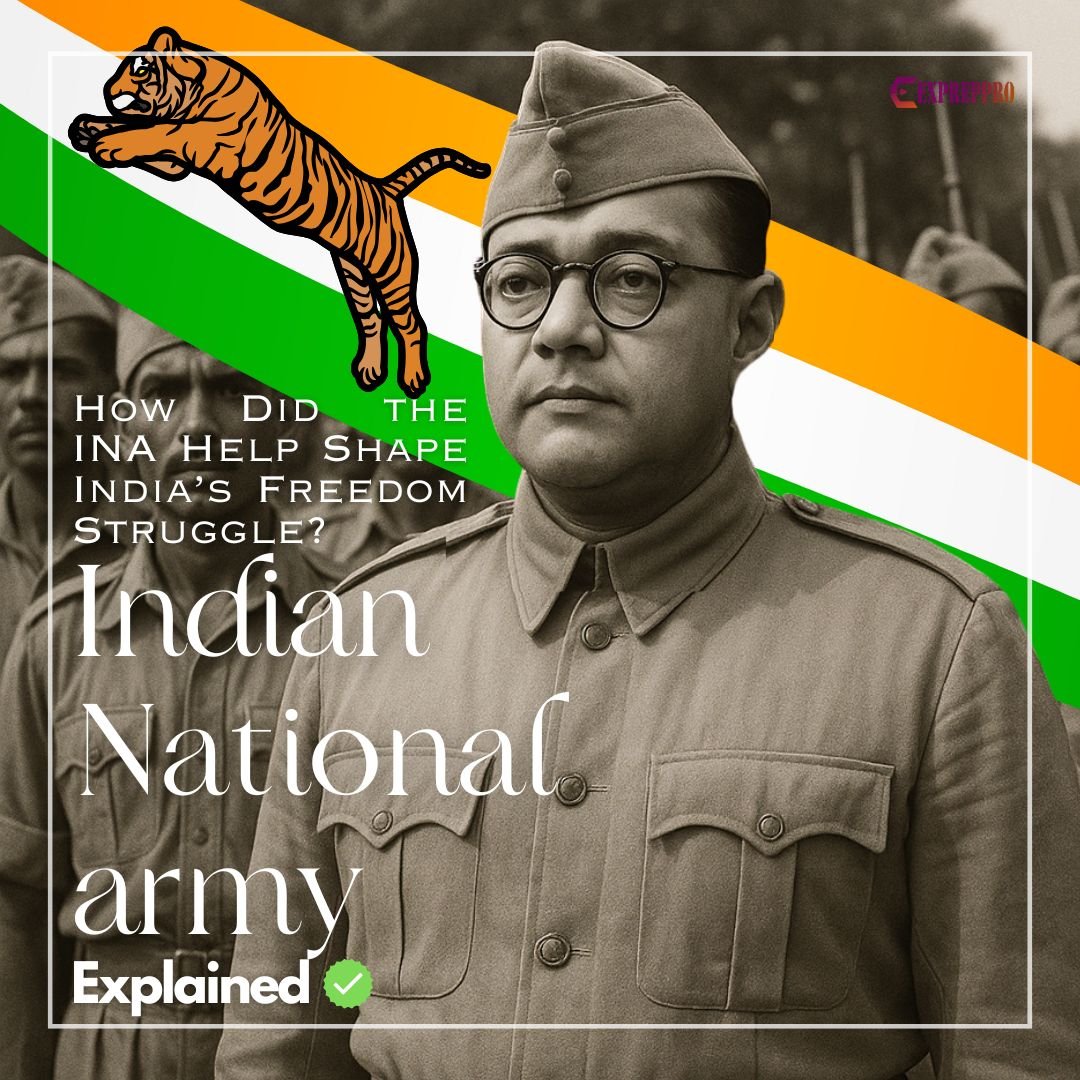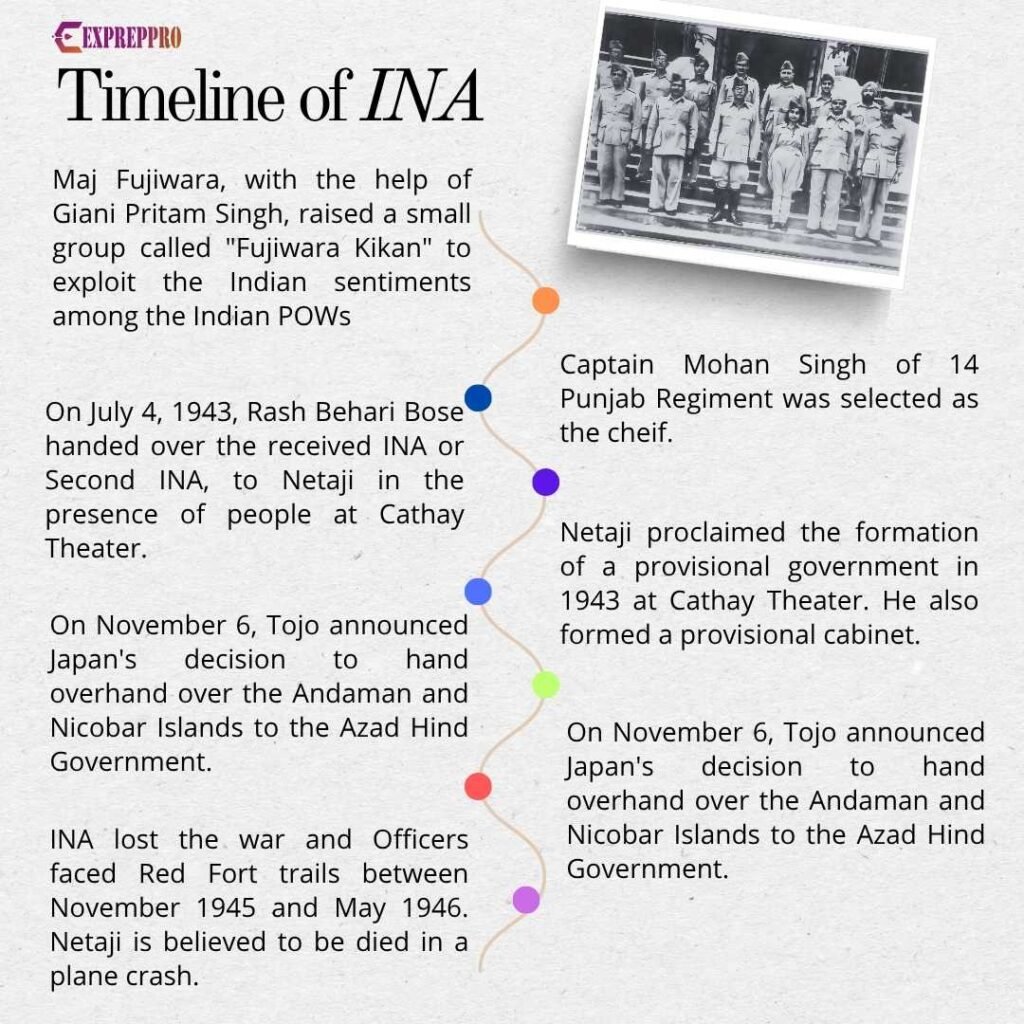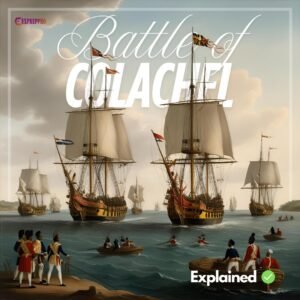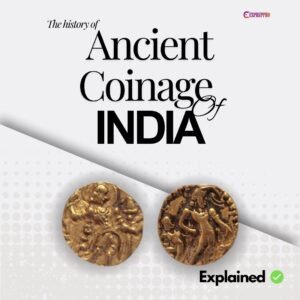
Indian National Army, also known as the Azad Hind Fauj, was a military wing of the Free India Provincial Government formed during World War II to fight against British rule in India. It not only fostered the mindset of national unity but also challenged the British government with the help of Japan.
Introduction: Idea Of INA
The initial idea to raise an army of Indians with Indian soldiers in Malaya was born in the mind of the Imperial Japanese Army. But their intention was not the freedom of India. Instead, they want to effectively utilize the Indian human resources that they got as POWs.
For this, the Imperial Japanese Army selected an officer, Major Fujiwara Iwaichi, an army officer attached to intelligence.
After the Malayan campaign, Maj Fujiwara, with the help of Giani Pritam Singh, raised a small group called “Fujiwara Kikan” to exploit the Indian sentiments among the Indian POWs.
As the chief, Captain Mohan Singh of 14 Punjab Regiment was selected. Maj Fujiwara also assured that this force would be treated as an allied force and would receive support for their actions in India’s independence.
Growth Of INA After The Fall Of Singapore
After the fall of Singapore on February 15, 1942, Captain Mohan Singh got access to around 45000 Indian surrendered soldiers. Many POWs joined the new force, and the INA was given new insignia.
Split With The Imperial Japanese Army
When the assurances were not met, Capt Mohan Singh lost faith in Japan’s motives. His split with Japanese army officers resulted in his and another senior officer in INA Niranjan Singh Gill’s arrest.
On December 29, 1942, Kenpeitai military police arrested him. After his arrest, Japan disbanded the force, and most of its members returned to camps for POWs.
Rash Behari Bose’s Advice To Major Fujiwara
After learning about the incidents, Mr Rash Behari Bose advised Major Fujiwara about Mr Subhas Chandra Bose, also known as “Netaji”. Major contacted Netaji when he was in exile in Germany. In Germany, Netaji had recruited around 2000 Indian POWs to his Free India Legion from Indian POWs. Later, he abandoned the legion and moved to South Asia by using U180 and IL24 submarines.
Subhas Chandra Bose At The Helm Of The Indian National Army
In June 1943, bose moved to Singapore from Tokyo with Rash Behari Bose and Abid Hasan. Before moving to Singapore, he persuaded Tokyo to appoint Yamamoto as the chief of the Hikari Kikan, the liaison agency that deals with INA. This was to ensure a smooth working environment.(But relation with Yamamoto was not smooth).
On July 2, Bose reached Singapore. J.K Bhonsle and Mohammad Zaman Kiani received him, and INA gave him a proper guard of honour.
On July 4, 1943, Rash Behari Bose handed over the received INA or Second INA, to Netaji in the presence of people at Cathay Theater. In the speech, Bose even evoked his dream of holding the victory parade of INA at Delhi’s Red Fort. he also announced his intention to set up a provisional government of Free India.
The next day, July 5, Bose gave INA their battle cry “Chalo Delhi“. On July 6, INA held another parade in Singapore for Tojo, and he took the salute.
What is the basic organization of the Indian Army?
INA was under the Indian Independence League, and IIL’s headquarters was stationed at Rangoon. Initially, it was in Singapore before moving to Rangoon.
The regiments of the Indian National Army were named Gandhi, Azad, Nehru and Rani Jhansi. Apart from four, there was another one called “No. 1 Field Force”. INA also had Artillery, Corps of Engineers, Transport, and Signal units. For penetration missions, INA had a “special Bahadur group”.
The bulk of the INA formed three divisions, of which only the Ist DIV was operational before the Japanese offensive opened.
The 1st Divison was under Col. M.Z Kiani, Gandhi Brigade was under Col. Inayat kiani, Azad Brigade was under Col Gulzara Singh, Nehru Brigade was under Lt.Col Gurbaksh Singh Dhillon. The second Division was established in 1944 under the command of Col. Abdul Aziz Tajik. Later, a third division was created from civilian volunteers.
Structure of Indian Independence League
The Indian Independence League had a Council of Action. Rash Behari Bose was elected president of the Council of Action. The other four members elected to the Council were Captain Mohan Singh, army commander; K.P.K. Menon, in charge of publicity and propaganda; N. Raghavan, responsible for organisation; and Lieutenant-Colonel G.Q. Gilani, overseeing military training.
Indian Independence League had headquarters in Rangoon and a second headquarters in Singapore. The headquarters had 24 departments and functioned to create policies for the Provisional Government of the Azad Hind. Their Singapore headquarters had 12 departments.
The 24 departments are
- Finance
- Audit
- Netaji Fund Committee
- Supply
- Supply Board
- Purchase Board
- Revenue
- Recruitment and Training
- Planning
- Education
- Health and Social Welfare
- Planning
- Intelligence
- Information
- Production
- Agriculture and Industries
- Technical
- Communications
- Housing and Transport
- Overseas
- Labour
- Branches
Azad Hind Government
Netaji proclaimed the formation of a provisional government in 1943 at Cathay Theater. He also formed a provisional cabinet with
- A.C Chatterjee- Finance
- Capt Lakshmi Seghal -Women Affairs
- S.A Iyer – Publicity and Propaganda
- Eight members from the Armed forces – Aziz Ahmed, N. S. Bhagat, J. K. Bhonsle, Gulzara Singh, Mohammad Zaman Kiani, A. D. Logana-than, Ehsan Qadir, and Shah Nawaz Khan.
- Anand Mohan Sahay – Cabinet secretary with ministerial rank
- Rash Behari Bose – Supreme advisor
- A panel of advisors – Karim Gani, Deb-nath Das, D. M. Khan, Attavar Yellappa, John Thivy, Sardar Ishar Singh, and A. N. Sarkar.
The official language of the provincial government was Hindustani, with Roman script. Every speech and proclamation was translated into Tamil and English.
In October 1943, the provisional government declared war on the United States and Britain. Nine Axis countries gave their diplomatic recognition to this provisional government.
On October 28, Netaji left for Tokyo to attend the Greater East Asia Conference. This time, he got an opportunity to meet the Japanese Emperor. The Emperor received him with all the honours. On November 6, Tojo announced Japan’s decision to hand overhand over the Andaman and Nicobar Islands to the Azad Hind Government.

On the Indian Soil
By December 29, Bose reached Port Blair for a three-day visit. Now, Netaji’s promise of stepping foot on Indian soil before the year’s end has become a reality. He hoisted the Indian flag at the Gymkhana ground.
The cabinet has already decided to rename the Andaman Islands as Shaeed Islands, and Swaraj Islands and Netaji announced this decision. At that time, Indian soil was under the Azad Hind Government, and A.D. Loganathan was appointed as the Chief Commissioner of the Andaman and Nicobar Islands. (Japan didn’t hand over the whole administration.)
Major Operations
- INA was directly and indirectly involved in the U-Go and diversionary Ha-go campaigns in Manipur and the far south of the Arakan Hills.
- The reconnaissance mission of the Bahadur group of the INA, led by Major L. S. Misra, enabled the 55th Japanese Division to trap the 7th British Indian Division on the eastern side of the Mayu range.
- A spearhead unit of the INA’s Bahadur group sized Moirang about 28 miles south of Imphal, but INA 1st Div failed to capture Imphal. Soldiers without proper supplies suffered a lot. A. C. Chatterjee, erstwhile finance minister of the provincial cabinet, was appointed on March 16 as the chief administrator of the liberated territories. The provincial government also established an Azad Hind Dal, a civil affairs group responsible for managing the administration of India.
- Out of 6,000 INA volunteers committed, some 400 were killed in action, but at least 1,500 died from hunger and sickness. Another 800 surrendered, and more than 700 either deserted or disappeared in the forest.
Red Fort Trails
When Japan made their surrender on August 15, 1945, the fate of INA also changed. The British took a large number of INA members as prisoners and repatriated them to India.
Authorities imprisoned around 17,000 prisoners in the Red Fort and Kabul lines of New Delhi Cantonment. The trial began on November 5, 1945. Ten court-martials were held as part of the INA trials, and the first one was the joint court-martial of Colonel Prem Sahgal, Colonel G.S. Dhillon, and Major General Shah Nawaz Khan.
INC And Political Unity
The Congress Working Committee, organized at Pune, decided to act for the release of INA soldiers. They organized an INA relief and enquiry committee and constituted an INA fund. They got money from different layers of society. The Shiromani Gurudwara Prabhandhak Committee donated 7000 rupees to the INA fund.
Initially, the government planned to conduct trials in a remote place to avoid public attention. Claude Auchinleck gave orders to conduct trials in public. This decision was a serious miscalculation of the government and resulted in a public uproar against the INA trial. The INA trial was a rare situation where almost all parties, like the Congress, Muslim League, Communist parties, Union party, RSS, Hindu Mahasabha, Sikh League, Justice Party, Akali Dal and the Ahrars of Rawalpindi.
The Advocate-General for India, Sir N.P Engineer, presented the case for the prosecution and the defence was led by Mr Bhulabhai Desai. The political stalwarts took their barrister’s robe for INA prisoners. Mr Jawaharlal Nehru once again became a barrister to defend the INA soldiers after a thirty-year hiatus.
Others who came to help were Sir Tej Bahadur Sapru, Rai Bahadur Badri Das, Dr K.N. Katju, Asaf Ali, Sir Dalip Singh, Sir Eek Chand, and P.K. Sen. Judge-Advocate for trial was Colonel F.C.A. Kerin.
Charges Against INA Soldiers
The prosecution brought two charges.
- Waging war against the king.
- Murder and abetment of murder.
The defense questioned the legality of the trial, and the Azad Hind Government was technically a government that controlled the Andaman and Nicobar Islands, Parts of Manipur and Zeawaddy in Burma and was independent of the Japanese.
Major Fujiwara At Red Fort Trails
Major Fujiwara was at the hospital in Fukuoka due to malaria at the time of Japan’s surrender. he expected revenge from Britain, so he carried potassium Cyanide that he sourced from a nurse while he was in the hospital.
Later, he was summoned to Delhi not as a prisoner of war (POW) but as a witness. In Delhi, he attested that INA was raised to fight for Indian independence, and they were not puppets of Japan. During the dramatic reunion, his old Indian friends greeted him with cries of “Jai Hind Major Fujiwara“.
Red Fort Trial Verdict
During the trials, Major General Shah Nawaz Khan openly declared, “The question before me was — the king or the country. I decided to be loyal to my country“.
On January 3, 1946, the court-martial found all three INA officers guilty, and the court sentenced them to cashiering and transportation for life. Authorities delayed the trials of Shingara Singh and Fateh Khan, and they set aside their sentences after independence. Burhanuddin was found guilty and sentenced to seven years of rigorous imprisonment. Another officer, Rashid Ali, demanded help only from the Muslim League, and he also got punished by the court.
At last, the chief made an unprecedented stand due to the protest not only from people but also from defense personnel (both the Congress and the Muslim League condemned the mutiny by forces). General Claude Auchinleck commuted the sentence and remitted the life sentence, only sentencing them to cashiering and forfeiture of arrears of pay. It is clear from old notes of the intelligence bureau to the director that the government was scared of the INA spirit spreading to the Indian forces without communal lines.



